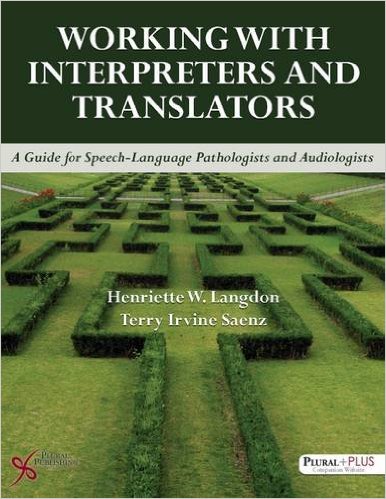Новости
|
 Автор: VnRuEn | Автор: VnRuEn |  Дата: 3 марта 2017| Дата: 3 марта 2017|  Просмотров: 0 Просмотров: 0
|
В разделе: - [Информация] |
|
 Working with Interpreters and Translators: A Guide for Speech-Language Pathologists and Audiologists by Henriette W. Langdon and Terry I. Saenz English | 2015 | ISBN: 159756611X | 288 pages | PDF | 2,5 MB Working with Interpreters and Translators: A Guide for Speech-Language Pathologists and Audiologists offers state-of-the-art procedures to conduct interviews, assessments, and conferences with students with limited English language proficiency and their families. As no research base is available in the field of communicative disorders on this specific topic, the information presented in this guide is supported by a critical review of the literature on best practices in interpreting for international conferences and legal and medical fields. Furthermore, the authors' experience working with language interpreters and training professionals as well as graduate students in communicative disorders, makes this a very valuable resource for professionals, interpreters/translators, as well as undergraduate and graduate students. Federal and state laws specify that, if necessary, English-language learners (ELL) need to be assessed in their native language when referred for possible special education. The number of ELL students attending public schools across the nation has increased in the past few decades. There are not enough speech-language pathologists (SLPs) or audiologists who are proficient in the various languages spoken by ELL students-even in Spanish, the most common language spoken by ELL students in the United States. The next best solution is to conduct fair assessments in collaboration with a trained interpreter/translator. Key features include: Information and references to most common languages spoken by ELL students. A description of culturally based variables that need to be considered in the process of interviewing and working with linguistic and culturally diverse populations. Review of best practices in speech-language and audiological assessments, both with and without materials in the given language Five video clips that illustrate various facets of the interpretation and translation process included on a PluralPlus companion website Working with Interpreters and Translators: A Guide for Speech-Language Pathologists and Audiologists is a must-have reference for anyone working with ELL students. Although the process was developed with the pediatric population in mind, much of this information can be applied to older culturally and linguistically diverse populations in need of speech-language and/or hearing services. It will also be useful to professionals working with language interpreters in allied health professions in other countries. |
||
|
|
||

 Working with Interpreters and Translators A Guide for Speech-Language Pathologists and Audiologists
Working with Interpreters and Translators A Guide for Speech-Language Pathologists and Audiologists 